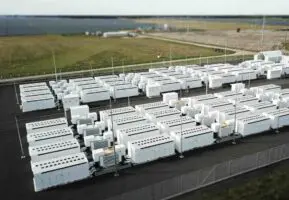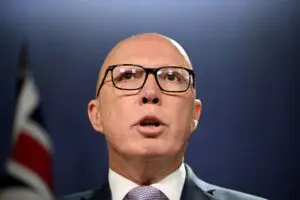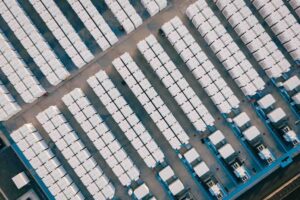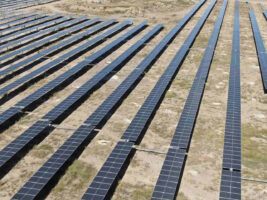See also, Queensland urged to ignore benefits of wind and solar and dump 50 per cent renewable energy target.
Here’s a quick test. Imagine you are a government, or a pricing regulator, or an independent advisory body, and you have been charged with addressing issues surrounding the soaring cost of electricity: Where would you focus your efforts – on the biggest source of those price surges, or a minor addition labelled green?
In the case of Queensland, and the Queensland Productivity Commission’s inquiry into electricity pricing, there is no prize for guessing: pretty much ignore the main contributor and hit the small guys labeled “environment”. That is exactly what is happening in the latest report, like so many others in Australia.
The QPC report is actually a highly readable analysis on the challenges facing the energy industry. But it also assumes a whole range of numbers that are questionable at best, and appears to use these to reach conclusions that favour the incumbent industry and the interests of “big energy”.
Almost every recommendation it makes targets the very technologies that it notes are challenging the status quo of the big incumbents – which in Queensland are as powerful and unassailable (and state-owned) as anywhere in the country.
As the QPC notes, “escalating network costs have been the primary driver of electricity price increases over the last decade, accounting for 82 per cent of the 87 per cent escalation in electricity prices.” This graph above shows the relative contributions to the average bill.
But don’t presume that the QPC is pursuing the big-ticket items.
According to Energex, the Queensland utility, these premium feed-in tariffs cost $15 million a month. The QPC wants the scheme stopped because of a “huge transfer of wealth” and its contribution to that huge red blob (I’m being ironic) marked environmental in the graph above.
But get this. The report also highlights the dubious bidding practices of the two big government-owned generators, CS Energy and Stanwell. According to the report, this practice from the two coal-generators which dominate two-thirds of the state’s generation capacity added $170 million to the cost of wholesale energy contracts in the first three months of last year alone. Those costs will be passed on to consumers in one way or another. The response? Set up a committee to monitor it.
The second major recommendation concerning rooftop solar from the QPC was for the Queensland government to abandon its commitment to having one million homes – and therefore around 3,000MW – of rooftop solar installed by 2020.
This last one has me completely bamboozled.
The QPC argues that to reach that target would require the state government to re-introduce a feed-in tariff of 45c/kWh. Yet, according to the modelling done by ACIL Allen, the state will likely get close to the 3,000MW target anyway.
If the feed-in tariff was raised to 10c/kWh, then the target would be reached in 2021, and nearly reached in 2020. Even the “base case” – unchanged tariffs – nearly reaches the target in 2020.
Why would it need a 45c/kWh tariff to breach that gap? Why wouldn’t it need some targeted incentives to rental homes, pensioners, or low-income housing, which in turn could offset some of the income support payments needed over the long term. The conclusion is never properly explained.
There are some other odd numbers here, which we discuss in a separate story. This includes the supposed “subsidy cost” of $10.8 billion of reaching Labor’s state target of 50 per cent renewables by 2030. Don’t do it, suggests the QPC.
Yet, in its same analysis, it notes that building extra renewable energy will lower wholesale electricity costs by more than $10/MWh, or nearly $600 million a year. Let’s assume a minimum 20-year life for those renewable energy assets, that’s a saving of more than $12 billion. Guess who would suffer most from that reduction? Those same state-owned generators who currently own 64 per cent of capacity, etc etc.
There are other funny numbers that also go unaddressed. The cross subsidy of air conditioning is six-times greater than that of solar PV – $700 per household versus $200. Any suggestion of a air-con tax? Not a chance. But higher network charges for solar households who are using less electricity? Of course.
Then there is the estimated costs of going “off grid” – the QPC quotes two reports that suggest it could be anywhere between $56,000 and $72,000. It’s true that going off grid in the suburbs may not deliver a “return on investment”, nor that it would be an “optimum economic outcome.”
But as long as the incumbents are kidding themselves about the costs of going off grid, there is little likelihood that they will address their own costs – namely those of the network. The QPC admits that some of the investment in networks has not been necessary. But should the networks write down their regulated asset base? Not a chance.
Indeed, the only salient recommendations on the network costs – remember, they have contributed 82 per cent of the 87 per cent rise in bills – is to merge the two networks into an even bigger, more powerful state-owned monopoly than it is now. Many argue the opposite, that they should be broken up into smaller networks.
And the report also suggests that retail functions of Ergon be separated from the network assets, despite its own recognition that combining the two would provide a more effective means of extracting value from the arrival of battery storage.
Restricting access to the “behind the meter”, or the “in home” market for rooftop solar, energy storage, and home energy management systems – as the big retailers insist – leaves that market in the hands of energy groups keen to protect the interests of their generation fleet, which are the most threatened by the new technology. It is a conflict of business interest that utilities overseas have found unmanageable.
This is not the first time that proposals to change tariffs – particularly for rooftop solar – have been justified by data that is doubtful at best. We saw an example of this in South Australia just recently. The regulators presumably hope that no one notices, and they have even admitted that they never calculate the benefits of distributed energy.
Still, the QPC’s recommendations are good enough for some, and have been received enthusiastically by “big energy” and their acolytes, including Keith Orchison, the former head of various energy industry lobby groups and the only person I know who feels compelled to mention his Order of Australia in every article he writes.
He wrote in Business Spectator on Monday of his horror that Queensland Treasurer Curtis Pitt had rejected the QPC’s call for the solar bonus scheme to be terminated early.
Maybe, just maybe, Pitt actually read the report.












